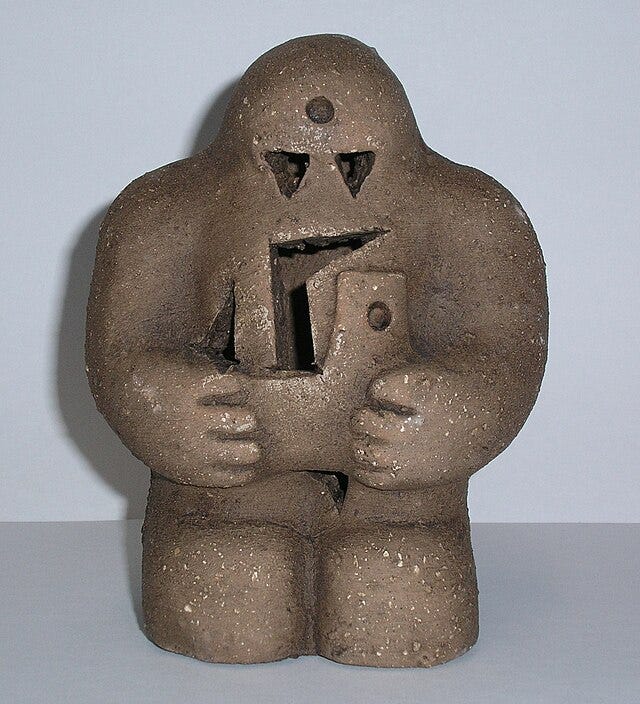The story of the golem is, at its core, a story about the power of words, and more specifically the power of words indelibly inscribed on the body.
It’s easy to ascribe the meaning of your choice to the golem story. There are tales going back centuries of rabbis building monsters out of clay to protect the Jewish community. As God created man out of mud, so the rabbis supposedly created the golem.
Often those stories end in the creature turning against the community it was created to protect, a clear “don’t play God” message. Or is it simply that the Jews have always needed supernatural protection?
But in all the stories the golem is brought to life with words, sometimes rolled up and placed in its mouth but, as often as not, carved into the clay of its body.
\In some stories, the golem is brought to life with the word “emet” (אמת), "truth," which has three letters in Hebrew: aleph, mem, and taf. Then, when the golem goes berserk and the rabbi needs to stop it, he erases the letter aleph making it now the two-letter Hebrew word “met” (מת), which means "death.”
Many of my own tattoos are phrases that have meaning and power to me, but the golem stories make me wonder if I give the tattoos power and meaning or if they give power and meaning to me.
Modern Jewish culture does not allow for much magic, but that hasn’t always been the case. (For a fascinating and comprehensive look at the history of Jewish magic, check out Dr. Justin Sledge’s Esoterica channel on YouTube.) There is in antiquity a tradition of Jewish magicians, rabbis and mystics who would use incantations and conduct ceremonies in Hebrew and Aramaic.
There are more than a few Jewish books of magic, too, like a Yiddishe necronomicon. Professor Meir Bar-Ilan, a historian at Bar-Ilan University in Israel writes about one such book, “Harba DeMoshe,” or “The Sword of Moses.”
Written in Hebrew and Aramaic probably in what is now Israel in about 700 CE, it teaches one how to do things like walk on water or how to free someone from jail, using magic.
Another book of magic, “The Scroll of Ahima’az,” tells of how Rabbi Ahima’az in the 10th century, resurrected a dead person by inscribing God’s name on his arm.
In all cases, the first step was inscribing God’s name on the magician’s body. God has many names in Jewish tradition. The name used in these incantations in particular has 42 letters. (It is unknown if British science fiction author Douglas Adams knew that name of God. I apologize if you don’t get that reference.)
Bar-Ilan makes the connection between having this long, divine name inscribed on one’s body and the practice of circumcision. Both, he writes, “denote incorporation into society and a change in one’s status.”
“However, there is a difference between these ceremonies: circumcision is performed on babies who have no awareness of the occasion and are forced to submit to it (in public),” he wrote. “Inscribing the Lord’s Name on one’s body signifies a rite of passage, since it is done by a grownup who has full control over his deeds.”
Which brings us back to tattoos.
Modern, nonreligious Jews get tattoos -- either Jewish in nature or otherwise -- of course for many reasons. Sometimes, that tattoo is a rite of passage, and signifies the change in status from adolescence to adulthood. Sometimes that tattoo is part of involvement in a non-Jewish community, be they bikers or the military or a community centered around a style of music.
Like words carved into the clay of a golem, those tattoos give them meaning and purpose.





